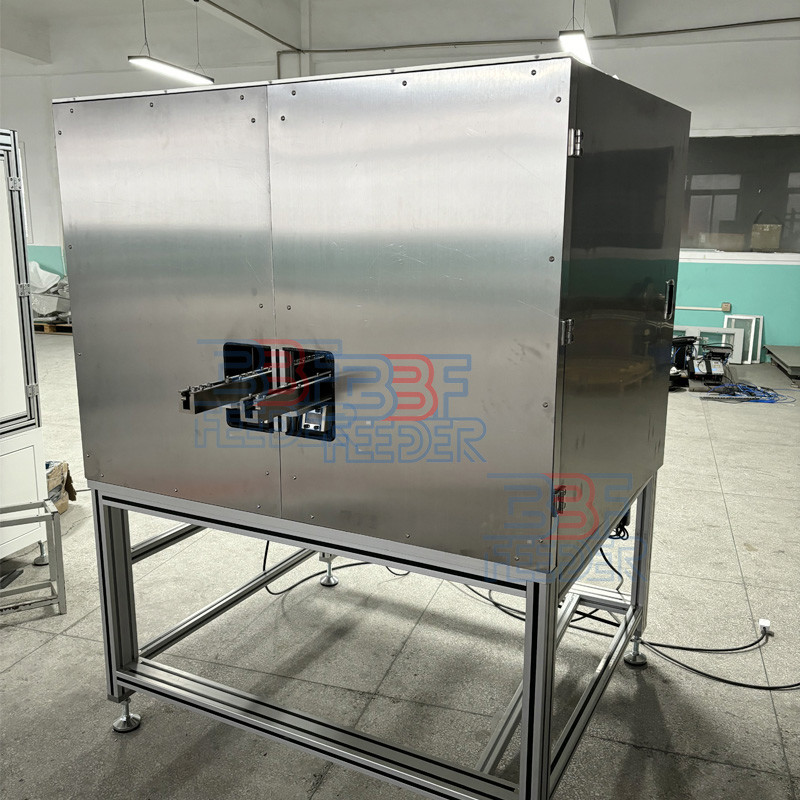| Sign In | Join Free | My frbiz.com |
|
| Sign In | Join Free | My frbiz.com |
|
| Categories | Screw Bowl Feeder |
|---|---|
| Brand Name: | BBF |
| Model Number: | D108 |
| Certification: | CE, ROHS, ISO9001 |
| Place of Origin: | China |
| MOQ: | Negotiation |
| Price: | Negotiation |
| Payment Terms: | L/C, D/A, D/P, T/T, Western Union, MoneyGram |
| Supply Ability: | 300 pieces per month |
| Delivery Time: | 3 working weeks |
| Packaging Details: | Wooden case package |
| Product Name: | Vibratory Bowl Feeder |
| Material: | Stainless Steel(SUS304) ,Aluminum(AL7075) |
| Power: | 200W,300W,1000W,1500W,2000W |
| Voltage: | 220V 50HZ/110V 60Hz |
| Color: | Green or Based on Customers' Requirement |
| Bowl Finishing: | Polishing or PU Coating |
| Package: | Wooden Case Package |
| After-sales Service Provided: | Spare Parts and Technology Support |
| Company Info. |
| Suzhou Best Bowl Feeder Automation Equipment Co., Ltd. |
| Verified Supplier |
| View Contact Details |
| Product List |
Belt Conveyor Vibratory Bowl Feeder Screw Nut Vibrating Hopper Feeder
1 . Descriptions:
Vibratory bowl feeders are devices used to feed parts in various applications, employing mechanical vibrations or centrifugal force for part movement along a conveying track. They have unique designs but share common features like the bowl and base plate.
The diameter of the feeder bowl is a crucial aspect, with the ideal size being ten times the length of the parts to be fed. Incorrect diameter leads to part jumping or insufficient feeding. Expertise from engineers and manufacturers is necessary for proper selection.
The base unit serves as the drive unit for the feeder system, chosen based on part size, weight, length, and quantity. It is supported by leaf springs and utilizes electromagnets for converting magnetic vibrations into mechanical vibrations. Base units with square bases generate more vibration, while round bases vibrate less. Multiple feeders sharing a common base can cause cross talk.
Linear feeders transfer and orient parts from the feeder bowl to assembly or other machines. There are four types: vibratory, conveyor, airveyor, and gravity. Vibratory inline feeder systems work with vibratory feeders to maintain part orientation during movement. Conveyor linear feeder systems are commonly paired with centrifugal bowl feeders, offering high accumulation capacity and quiet operation at high speeds.
In summary, vibratory bowl feeders automate part feeding using vibrations or centrifugal force. They consist of hoppers, feeder bowls, base units, and can incorporate linear feeder systems. Proper selection and design of these components are crucial for efficient and accurate feeding operations.
2 . Specifications:
| Product name | Vibratory Bowl Feeder |
| Material | Aluminum(AL7075), Stainless Steel(SUS304) or Based on Customers' Requirements |
| Controller | CUH,Sanki,Sinfonia,REO,Afag |
| Voltage | 220V 50HZ/110V 60Hz or Based on Customers' Requirements |
| Power | 300W/500W/1000W/1500W/2000W |
Bowl Finishing | Polishing or PU Coating |
| Speed | Based on Customers Requirements |
| Warranty | 2 Years |
| Certification | CE, ISO9001, ROHS |
| Lead Time | 3 Working Weeks |
3 . How Does A Vibratory Bowl Feeder Work :
The feed rate is a crucial factor in determining the efficiency of a feeding system. It depends on various factors such as part configuration, positioning requirements, track quantity, and unit size. Key factors related to the parts being fed must be considered to establish the optimal feed rate.
Part characteristics, including dimensions and composition, significantly influence the feed rate. The materials used in the parts' production affect their wear characteristics and friction coefficient, impacting the feed rate. Proper part orientation during feeding is crucial and affects the feed rate. The weight and center of gravity of the parts also play a role in their orientation and the overall performance of the feeding system. Understanding the system's characteristics is essential for seamless integration of bowl feeders.
Additionally, the condition of the parts, such as oiliness,
wetness, or moldiness, can have a substantial effect on the feed
rate. Maintaining the appropriate quantity of parts in the feeder
bowl is vital to ensure proper operation. Sensors are used to
monitor the part level and enable automatic dispensing of
additional parts when necessary. It's important to manage the
vibrations' amplitude as the feeder bowl empties to avoid reduced
feed rates. To prevent issues like jamming and clogging, feed track
detection is implemented with strategically placed sensors. They
deactivate the track if it becomes congested, preventing potential
problems.
4 . More Pictures:



|